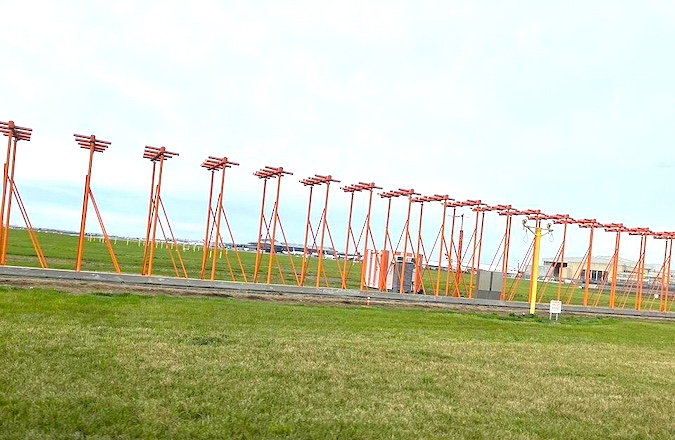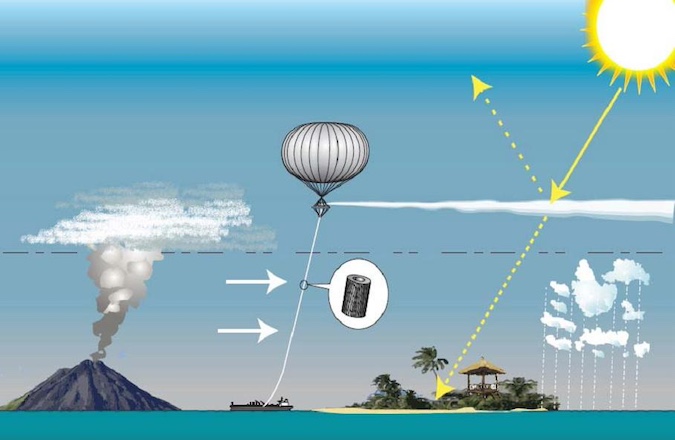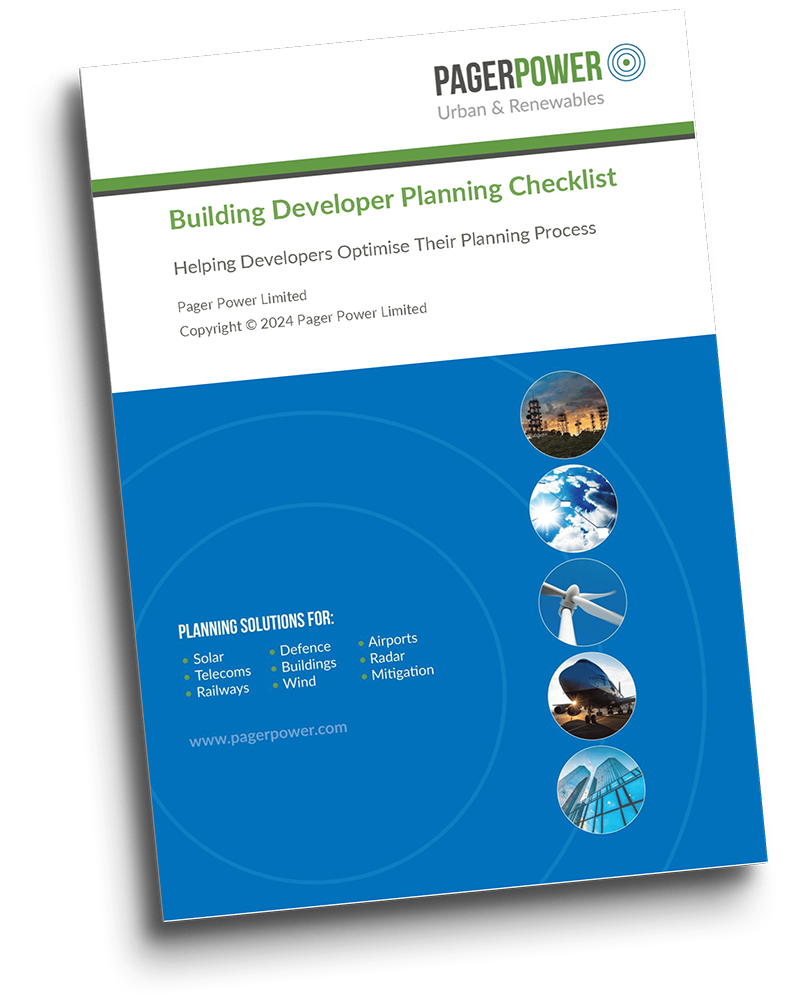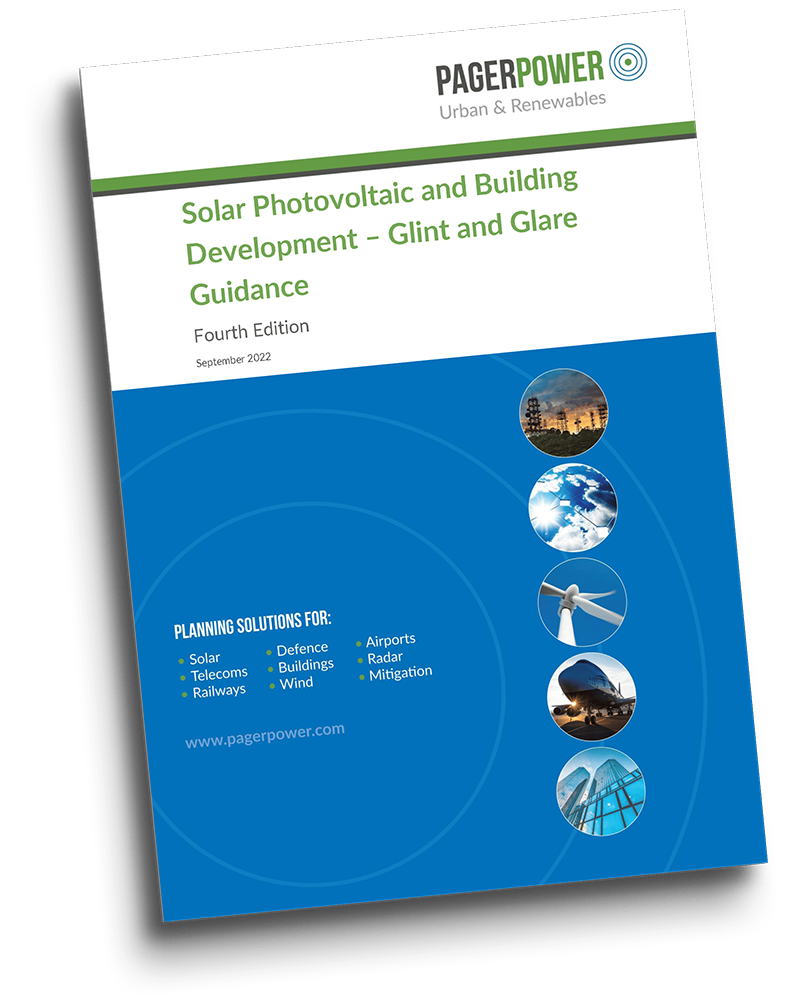CNS Safeguarding Series: ICAO Eur Doc 015 vs CAP 670

Interference to Communications, Navigation, and Surveillance (CNS) equipment is a consideration when planning new developments near airports. It is of great importance to ensure that ground based equipment – which aids aircraft in navigation including the following of enroute procedures, down to safe landing and takeoff – can be seen clearly by the aircraft it is meant to assist, and that the line of sight from navigation aid to aircraft is not blocked.
A ready reckoner for whether a proposed development is likely to present signal interference to CNS equipment, can be found by looking at whether 3D surfaces designed to safeguard this equipment are infringed. The two most prominent of these applicable in the UK are ICAO Eur Doc 015, published by the International Civil Aviation Organisation (ICAO), and CAP 670, published by the Civil Aviation Authority.
What is ICAO Eur Doc 015?
The European Guidance Material on Managing Building Restricted Areas [1], referred to in short as ICAO Eur Doc 015, was originally published in 2004 to address discrepancies in the approaches taken to building restrictions around navigation aids by different countries in Europe. It established a standard procedure that could be followed to assess new buildings with respect to these navigation aids. The document – now in its third edition, published in 2015 – sets out safeguarding surfaces for a range of navigational aids. It is important to note that it does not provide any guidance pertaining either to electromagnetic interference or to the safeguarding of flight procedures themselves.
What is CAP 670?
Civil Aviation Publication (CAP) 670, covers Air Traffic Services Safety Requirements [2] and was first published in 1998. It covers a broad range of considerations extending from the maintenance and standards required of navigation equipment, to the safeguarding of CNS equipment. Perhaps the section of particular interest to readers of this article is section “GEN 02: Technical Safeguarding of Aeronautical Radio Stations Situated at UK Aerodromes: Guidance Material”. It states that licensed aerodromes and air traffic services providers share a responsibility to undertake technical safeguarding of their radio sites (including navigational aids) to ensure that adequate signal strength can be received by pilots. This is in line with the Air Navigation Order 2016 (ANO)[3]. The definition of technical safeguarding includes physical safeguarding, which accounts for electromagnetic effects and line of sight propagation, and radio safeguarding, which ensures that no interference is caused by other radio waves. When constructing buildings near aerodromes, it is expected that the most significant impacts will come from physical obstructions, and so the document then establishes safeguarding frames which can be used to help determine the likely physical obstruction caused to different types of CNS equipment by these obstructions.
Rule Set Comparison
These guidance documents – though differing in their technical detail – both include CNS safeguarding guidance based on the principle that obstacles, which could include new buildings and renewable energy developments, should be limited in height when placed near such equipment. The height limits in question are in both cases governed by 3D surfaces which typically start at the base of the navigation aid, and slope upwards in the area surrounding it. These slopes are either in all directions or in a specific direction, depending on the nature of the navigation aid in question.
Both documents are quite non committal, in so far as they make it clear that the methodologies listed are guidance and that the final say lies in a detailed aeronautical study (Eur Doc 015) or in the hands of the engineering inspector (CAP 670). Both acknowledge but do not focus on the effects caused by electromagnetic interference. We will explore the differences between the dimensions of the surfaces themselves properly in the next edition, but in the majority of cases, the safeguarding surfaces defined in ICAO Eur Doc 015 extend further from the aerodrome and are slightly more restrictive in height. This does not mean that it is not beneficial to look at both the CAP 670 and ICAO Eur Doc 015 frames, for the reasons outlined above.
Applicability
In terms of their applicability, both can be and have been used in the UK, as available sources of guidance. CAP 670 has been written to provide an acceptable means of compliance (AMC) to paragraphs 205 and 206 of the ANO 2016 [3]. These parts of the ANO set out requirements for the provision, maintenance and operation of Air Traffic Services (ATS) equipment, which includes navigation aids. In Pager Power’s experience, CAP 670 is not the only means by which this part of the ANO can be complied with. ICAO Eur Doc 015 appears more frequently, and along with other ICAO and EASA guidance it is applied in the UK. For assessments outside the UK, CAA guidance is not applicable, and therefore it is reasonable to refer to only ICAO Eur Doc 015, unless alternative suitable local guidance has also been made available.
How Pager Power can help
Pager Power has bespoke modelling software which can be used to model the safeguarding surfaces (frames) specified in both ICAO Eur Doc 015 and CAP 670. Our experts can model whether a proposed development breaches these surfaces, while engaging with the relevant stakeholders and providing high quality support throughout the lifetime of your project. For support, please contact us.
Further Reading
Pager Power’s CNS series:
Part 1 Introduction: https://www.pagerpower.com/aviation/introducing-cns-equipment-deep-dive/
Part 2 Communications: https://www.pagerpower.com/aviation/cns-equipment-deep-dive-part-2-communications/
Part 3 Navigation: https://www.pagerpower.com/aviation/cns-equipment-deep-dive-part-3-navigation/
References
[1] ICAO. European Guidance Material on Managing Building Restricted Areas. Third Edition, November 2015.
[2] CAA. Air Traffic Services Safety Requirements. Third Edition, Amendment 1/2019, 1 June 2019. Part B, Section 4: GEN 02: Technical Safeguarding of Aeronautical Radio Stations Situated at UK Aerodromes: Guidance Material .
[3] The Air Navigation Order 2016. Part 7, Chapter 5, Articles 205 and 206.
Figure 1: DaHuzyBru on Wikimedia Commons. 5th October 2023. CC BY-SA 4.0. https://commons.wikimedia.org/wiki/File:London_Heathrow_Instrument_Landing_System_%28ILS%29,_October_2023_03.jpg






